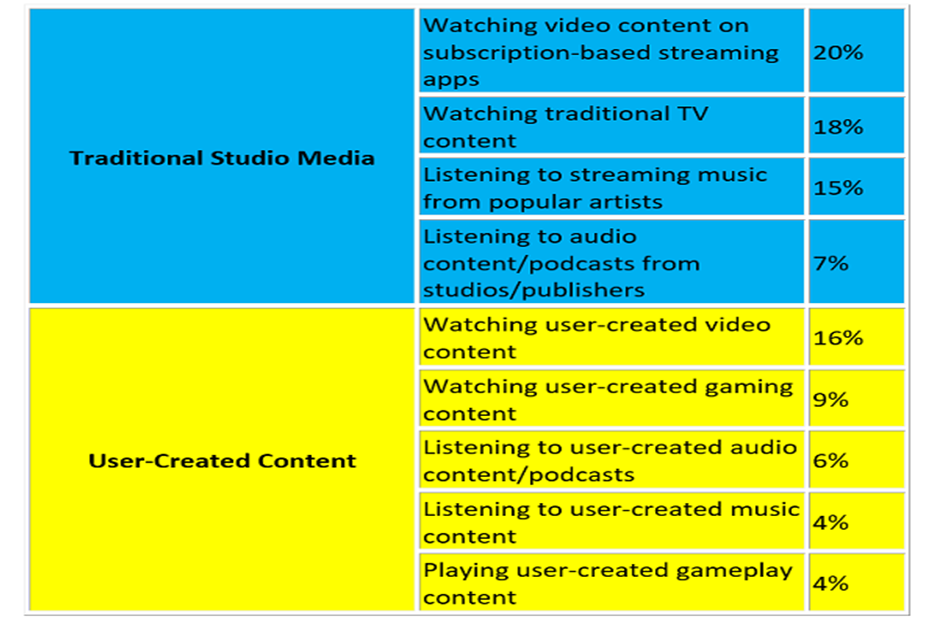Ah, the good old days. Pour your favorite beverage, sit down in front of the television, and during the commercials, watch the big brands market their products. COKE, FORD, McDonald’s, Kellogg’s, and DOVE all tried to sell us their wares with mass marketing campaigns primarily run from TV.
Today, the top brands still use TV, but now spend a big percentage on social media, as can be seen in the chart below:

Source: Social Media Today
Looking at the numbers, today the average person watches traditional tv content 18% of the time, while user created video content is viewed 16% of the time, up from nothing in just a few short years.
Social media is changing many aspect of our lives. From how we market products, both old and new, to how we communicate ideas, to changes to our educational delivery systems, conversations are replacing the push of mass marketing plans, hoping for enough hits to justify the high cost. With the cost of social media being much lower than most traditional tools, many new products can get traction, as their cost per customer acquisition is affordable for smaller companies. Glasses, mattresses, specialty shirts, special underwear – you know the ones – and all the new drugs can now be sold individually, and do not have to be sold via the big box stores. This direct customer connection starts their conversations, and energizes their feedback loops, leading to better customer satisfaction, and more sales.
These feedback loops allow for companies to focus their marketing budgets into areas that show high chances of closing a sale. So, a television show with vampires attracts a certain demographic that might be interested in new glasses, but not in an SUV. You can probably guess who watches all the house renovation shows.
To this end, when I watch tv, I enjoy seeing the types of commercials that are on offer, to see if they come close to interesting me in a response, or am I just seeing a saturation model whereby my eyeballs are shown the same visuals, more and more now with an mascot, to trigger a ” must have” reaction. The saturation model of showing us a full commercial with a story, them quickly migrating to a shorter version(s) so the number of times I am exposed increases, must be effective, or we would not see this technique. At least it gives me time to go to the kitchen and back, all while wondering why a turtle would be used in a pistachio commercial …
My favorite shows get bombarded with marketing that my generation seems to respond to favorable, as the need exists. This commentary on Boomers in dire need of adult diapers, an erectile dysfunction fix, or diabetes medication is actually depressing. Boomers know that these are all interrelated ( GEN X spoiler alert ) as a sign of our aging, but who wants to be reminded ? These ads can be scary, but they must drive sales, or they would not be used.
So, the next time you are watching television, or even your favorite social media, check out the ads on offer, and see if they interest you, or did the marketers guess wrong with their selection ? In the comments below, let me know if you have the same types of reactions as I did, or if you are watching the wrong shows, based on the advertising content. After all, maybe I really like vampires but just don’t know it yet.
Twitter: Are you watching the content advertisers think you are watching ? #socialmediachoices #televisionmarketing. Check out my new blog: https://bit.ly/3CvY1f8
Facebook: Advertisers are trying to drive product conversations by narrowing their content to appropriate audiences. Is this working for you ? Find out why I believe they are succeeding today. https://bit.ly/3CvY1f8
https://keap.com/business-success-blog/marketing/digital-marketing/how-to-market-to-baby-boomers